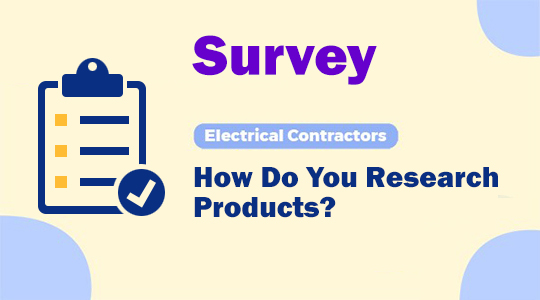
Look Beyond Lumens per Watt for Even More LED Energy Savings
Chuck Ross
In just a little more than a decade, LED lighting systems have moved from a not-quite-yet-there technology to one that essentially owns the market, especially in commercial applications. With efficacy ratings that now surpass those of once-dominant fluorescent fixtures, LEDs also can operate for years before needing replacement, versus months for fluorescent tubes. But their added controllability can be an overlooked advantage for building owners and managers considering a lighting upgrade. Pairing LED fixtures with occupancy and daylight sensors can create a dynamic lighting system that boosts energy savings in ways that simple lumens-per-watt measurements can’t define.
Lighting efficacy is determined by dividing its maximum output in lumens by the number of watts used to create that output. Today’s LED troffers often have efficacy ratings of 110 lm/W to 130 lm/W, with especially high-performing models topping 200 lm/W, all offering a big improvement over fluorescent fixture efficacies that can be as low as 80 lm/W. But it’s important to recognize that efficacy ratings are based on a fixture’s maximum output. Especially in many newer buildings designed to make the most of natural daylight, fixtures could be operating at much lower levels for much of the day, thanks to LEDs’ high controllability.
LEDs are, essentially, computer chips, which makes them much easier to integrate with lighting control systems. It’s this capability that’s driving an emphasis on high-efficiency lighting in today’s more ambitious building energy codes. Of course, better dimmability is a starting point, allowing occupants to set lighting to their individual comfort levels. But automation takes the resulting energy savings much higher. Daylight sensors can take output down to zero and back up again, keeping light levels steady as available natural light rises and falls. Similarly, occupancy sensors make sure lights go off when spaces are unoccupied. And the latest controls could help improve productivity by shifting the color of the light fixtures produce to mimic natural sunlight more closely during afternoons when workers’ energy levels might be drooping.
Adding controls doesn’t have to mean a lot of expensive wiring, as many new products feature onboard communications that can be networked with a Bluetooth-enabled mobile device. This is yet another reason to look beyond efficacy ratings when seeking to boost a building’s lighting efficiency. Those ratings are certainly a strong starting point, but understanding how a system will be used on a daily basis can lead you to control options that could be even more significant to a client’s bottom line.
Lighting efficacy is determined by dividing its maximum output in lumens by the number of watts used to create that output. Today’s LED troffers often have efficacy ratings of 110 lm/W to 130 lm/W, with especially high-performing models topping 200 lm/W, all offering a big improvement over fluorescent fixture efficacies that can be as low as 80 lm/W. But it’s important to recognize that efficacy ratings are based on a fixture’s maximum output. Especially in many newer buildings designed to make the most of natural daylight, fixtures could be operating at much lower levels for much of the day, thanks to LEDs’ high controllability.
LEDs are, essentially, computer chips, which makes them much easier to integrate with lighting control systems. It’s this capability that’s driving an emphasis on high-efficiency lighting in today’s more ambitious building energy codes. Of course, better dimmability is a starting point, allowing occupants to set lighting to their individual comfort levels. But automation takes the resulting energy savings much higher. Daylight sensors can take output down to zero and back up again, keeping light levels steady as available natural light rises and falls. Similarly, occupancy sensors make sure lights go off when spaces are unoccupied. And the latest controls could help improve productivity by shifting the color of the light fixtures produce to mimic natural sunlight more closely during afternoons when workers’ energy levels might be drooping.
Adding controls doesn’t have to mean a lot of expensive wiring, as many new products feature onboard communications that can be networked with a Bluetooth-enabled mobile device. This is yet another reason to look beyond efficacy ratings when seeking to boost a building’s lighting efficiency. Those ratings are certainly a strong starting point, but understanding how a system will be used on a daily basis can lead you to control options that could be even more significant to a client’s bottom line.
Photo courtesy of Universal Douglas







